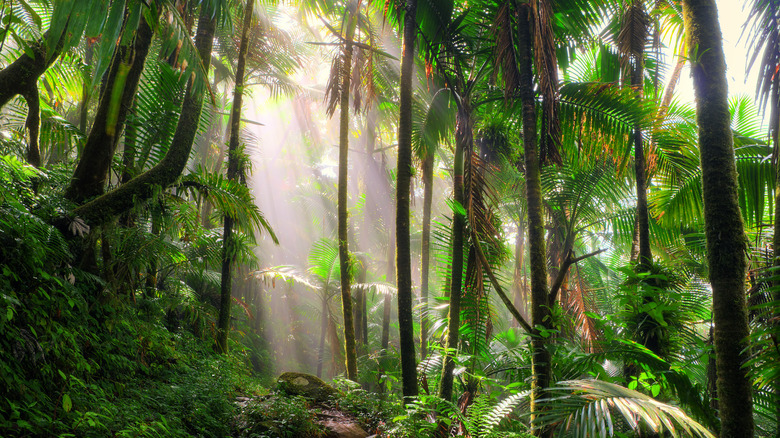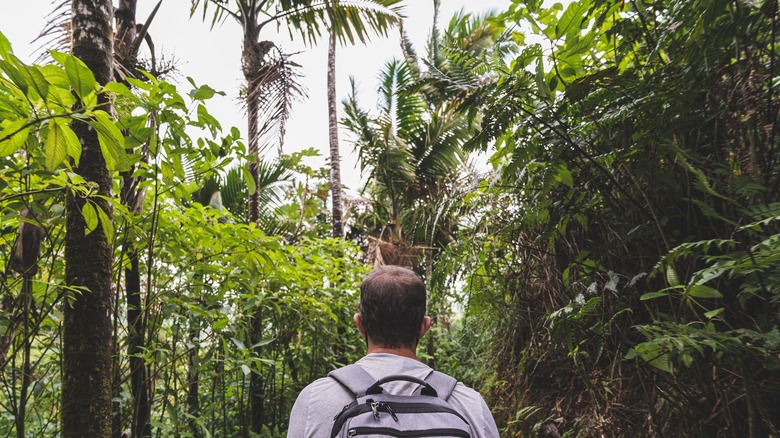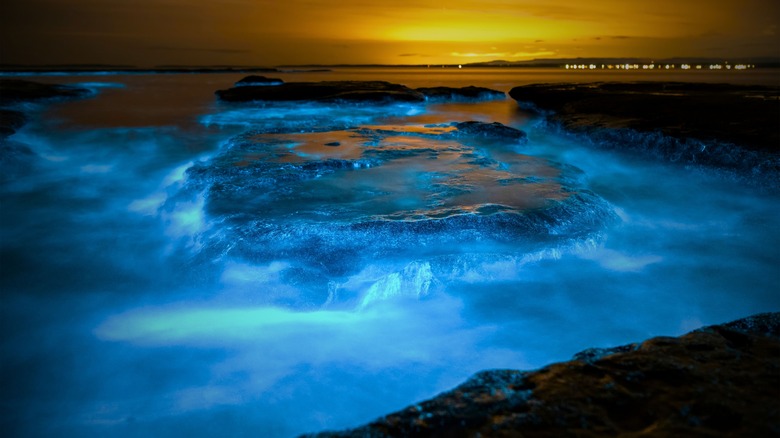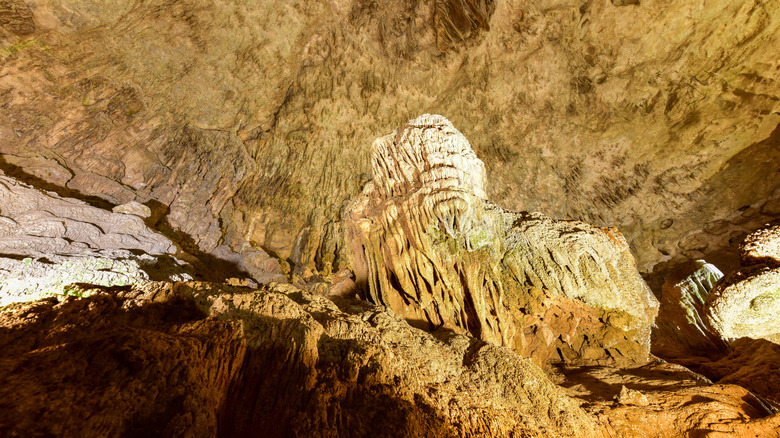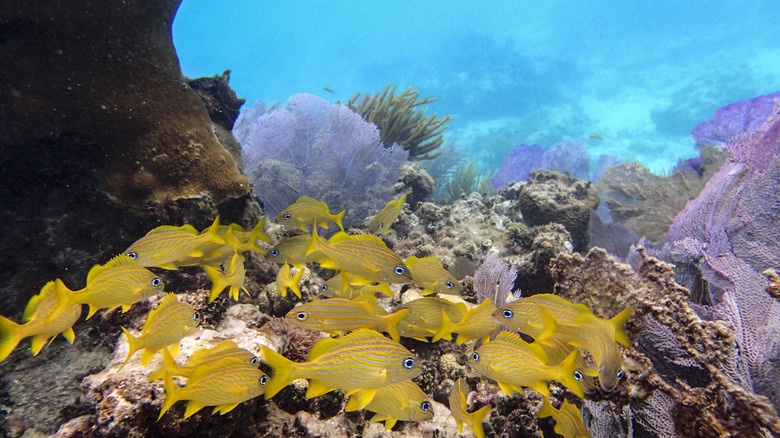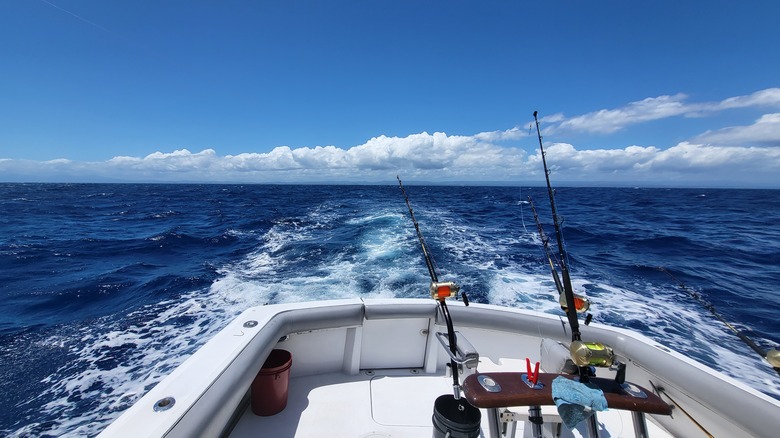Epic Outdoor Adventures In Puerto Rico
Often described as an outdoor enthusiast's paradise, Puerto Rico offers up a number of epic outdoor adventures — several of which cannot be found anywhere else in the world. While it has all the qualities of a tropical paradise, Puerto Rico is also a U.S. territory. This, along with a very ample airport in the capital city of San Juan, makes it incredibly easy for Americans (and others) to travel to, as it requires no passport for U.S. citizens and the official currency is the U.S. dollar.
Those who head to Puerto Rico in search of adventure will quickly realize it is not just a single island. Rather, it is an archipelago bounded by the Caribbean Ocean to the southwest and the Atlantic Ocean to the northeast. The islands of Puerto Rico are mountainous, with miles of coastal shorelines, inland rivers, lagoons, lakes, and bays. It is also home to the only tropical rainforest within the U.S. National Forest system. These factors combine to truly make it a paradise for outdoor enthusiasts, providing a variety of unique and epic outdoor adventures, some of which may seem almost surreal.
Hike in El Yunque National Park
El Yunque National Forest takes in close to 29,000 acres of tropical rainforest in the northeast of Puerto Rico. Hiking along the 24 miles of trails contained within the park offers adventurers a chance to see a number of plants and animals that are not commonly found elsewhere. Although there are a handful of creatures you should beware of while adventuring in El Yunque, overall the rainforest is safe — especially compared to other tropical rainforests throughout the world.
Like all national parks, El Yunque offers a variety of outdoor activities. There are more than a half dozen designated swimming areas in the rainforest and stopping at one can be a great way to cool down during a hike. A number of these swimming spots are accompanied by waterfalls, which only adds to the exotic feel of El Yunque. Hikes can also be interspersed with stops at any of the dozens of lookout and observation locations scattered throughout the park. The Yokahú Observation Tower in particular allows for stunning views over the rainforest canopy.
Tour operators are also active in El Yunque and offer activities like zip-lining and ATV tours. Camping, unfortunately, is not possible at this time, but will soon be available again. The campsites have been under repair, but the park plans to reopen numerous sites in the near future.
Paddle the bioluminescent bays
Paddling in a bioluminescent bay is a rare, epic, and somewhat otherworldly outdoor adventure. Why so rare? While bioluminescent events can occur in a variety of marine environments, there are very few saltwater bays that consistently glow. Sources vary on the exact number of these illuminated water bodies, however, what is known with certainty is three of them are in Puerto Rico. This certainly makes Puerto Rico the premier destination for anyone wishing to witness the phenomena of a glowing estuary caused by microscopic single-cell organisms called dinoflagellates.
The three bioluminescent bays found within Puerto Rico are scattered through different regions. Mosquito Bay, considered the brightest bioluminescent bay in the world according to Guinness World Records, is situated on the island of Vieques, which is about 8 miles off the eastern coast of mainland Puerto Rico. Laguna Grande, found near the town of Fajardo on the eastern side of the main island, is perhaps the most accessible of the three, as it is only about an hour's drive from San Juan. Finally, there is La Parguera in Lajas on the southwestern portion of the main island.
Kayak rentals and tours are available at all three locations. There are many mistakes paddlers can make, but not taking a nighttime paddle on one of these bioluminescent bays while visiting Puerto Rico would be one of them.
Explore the underground river
On the northwest side of the mainland is a somewhat hidden, yet surprisingly impressive natural feature – Rio Camuy, the third-largest underground river in the world. Just as impressive as the size of Rio Camuy is the fact it was able to remain hidden for so long. It is actually a very recent archeological discovery –- at least by modern people. The cave system and accompanying river were not discovered until 1958. Subsequent exploration has revealed evidence that the indigenous peoples were familiar with the cave system, but otherwise, this massive labyrinth of caves and the river that runs through it was hidden from the modern world until more than a decade after World War II.
To date, the entire cavern system has yet to be explored. However, it is known to contain at least 200 caves stretching over an impressive 10-mile distance. Archeologists believe the system may actually contain at least three times as many undiscovered caves. There are more than a dozen known entrances to the cave system, but only a portion of these are open to the public. Today, the 268-acre Rio Camuy Cave National Park affords visitors the opportunity to experience this extraordinary geological landform for themselves, though it's essential to go as part of a tour.
Snorkel along the beachfront
It is hardly a surprise that a chain of islands surrounded by clear tropical waters full of colorful fish and marine life is an ideal place to snorkel. However, it is still somewhat surprising just how prime access there is for snorkelers and free divers in Puerto Rico. Each of the three main islands –- the mainland, Vieques, and Culebra –- offers unbelievable snorkeling opportunities.
The majority of people visiting Puerto Rico stay in San Juan, and from there they are able to snorkel from just about any beachfront. However, Escambron Beach is considered the best area in San Juan for consistently good snorkeling conditions, as its waters are protected by several natural rock formations. It is also home to Escambron Beach Marine Park. Tres Palmas Marine Reserve near Rincon, Seven Seas Beach near Fajardo, and La Parguera Nature Reserve on the southwestern coast are other snorkel hotspots on the main island. From Fajardo, snorkelers can also take a water taxi to Cayo Icacos, an uninhabited island within the La Cordillera Nature Reserve. On the smaller islands of Vieques and Culebra, visitors will find plenty of worthwhile snorkeling along almost every beach. It's also possible to join one of the numerous snorkel and dive tour operators for those who don't wish to go the DIY route.
Go fishing for fun and adventure
Puerto Rico is surrounded by water and criss-crossed by numerous rivers and streams. So, it is little wonder that Puerto Rico offers such a myriad of fishing opportunities. There are numerous guides and charter boats willing to treat anglers to a day on the water, whether it be offshore in search of dorado, wahoo, tuna, and billfish or inshore for tarpon or snook.
There are also plenty of self-guided angling opportunities in Puerto Rico for those who want to make sure they take advantage of the best time of day to go fishing. Light-tackle anglers and fly fishers will have plenty of opportunities to target tarpon and snook within the bays, lagoons, estuaries, saltwater stretches of river, and along the beachfront. Anglers fishing on the beachfront can also catch a variety of reef fish, including snapper and barracuda. However, there are not just saltwater angling opportunities to be had in Puerto Rico. Those who choose to fish the freshwater portions of Puerto Rico's rivers and streams can expect to catch peacock bass, tilapia, and a variety of panfish.
